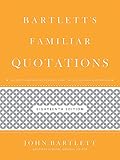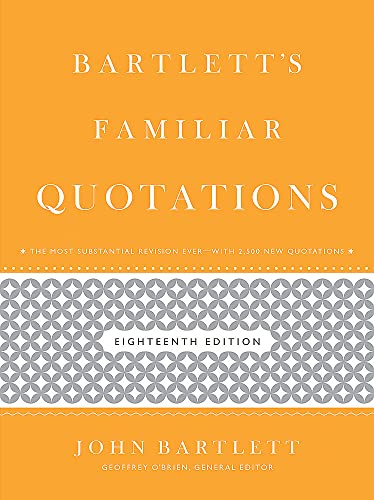 Who knows how books get on your shelves? They find their places and wait patiently for someone to pick them up. Sometimes they sit untouched for decades, until their owners move out and unload the bookshelf into packing boxes. Recently perusing our bookcase, I happened on Chaplin and Agee: The Untold Story of the Tramp, the Writer, and the Lost Screenplay by John Wranovics and began reading because I like movies and love James Agee. I don’t know how this book came to reside at our house, but it unexpectedly zapped me back in time, back to my parents’ bookshelf, back to when I began loving books.
Who knows how books get on your shelves? They find their places and wait patiently for someone to pick them up. Sometimes they sit untouched for decades, until their owners move out and unload the bookshelf into packing boxes. Recently perusing our bookcase, I happened on Chaplin and Agee: The Untold Story of the Tramp, the Writer, and the Lost Screenplay by John Wranovics and began reading because I like movies and love James Agee. I don’t know how this book came to reside at our house, but it unexpectedly zapped me back in time, back to my parents’ bookshelf, back to when I began loving books.
Wranovics tells a convoluted story about film critic James Agee’s meeting and becoming friends with Charlie Chaplin, whom Agee revered as an artist. Through Chaplin, Agee also got to meet the director John Huston. The tale eventually leads to Agee’s screenplay for Huston’s renowned film The African Queen. After Agee suffered a heart attack, he was replaced by Peter Viertel. Viertel subsequently wrote an unflattering novel about John Huston called White Hunter, Black Heart.
That’s what did it. That title sent me back in time.
All at once, I’m looking at my parents’ bookcase, circa 1965. I can picture the spine of that book through the glass door, encased in a green paper cover. Sadly, I can’t picture the books on either side of it. Pretty much all of them dated from the same era, when hard-drinking men like John Huston were making movies.
 I wish I’d taken a picture of those book shelves, but who would think of doing that? They spoke to me of my parents’ lives, their education, and the era which formed them. I can recall some titles, of course. Betty MacDonald’s The Egg and I. It All Started with Columbus and its sequels by Richard Armour, whose humor tickled my dad. All of these I read at some point.
I wish I’d taken a picture of those book shelves, but who would think of doing that? They spoke to me of my parents’ lives, their education, and the era which formed them. I can recall some titles, of course. Betty MacDonald’s The Egg and I. It All Started with Columbus and its sequels by Richard Armour, whose humor tickled my dad. All of these I read at some point.

 Mark Schorer’s biography of Sinclair Lewis, An American Life, was there, and I felt compelled to read it. I consumed books voraciously, and they were there for the taking. I’d acquired several lists from the library and school of classic books “everyone” should read, and I loved checking off those titles. Hence, I had read Lewis’s Babbitt and Main Street, because back then you were supposed to. Lewis had won the Nobel Prize for Literature, after all, but who reads him anymore?
Mark Schorer’s biography of Sinclair Lewis, An American Life, was there, and I felt compelled to read it. I consumed books voraciously, and they were there for the taking. I’d acquired several lists from the library and school of classic books “everyone” should read, and I loved checking off those titles. Hence, I had read Lewis’s Babbitt and Main Street, because back then you were supposed to. Lewis had won the Nobel Prize for Literature, after all, but who reads him anymore?
 I even ploughed through my dad’s massive Autobiography of Lincoln Steffens, the old muckraker, whom most people now would never have heard of. My dad was a newspaperman, who graduated circa 1933 from Ohio State University with a degree in journalism. One of his friends at the Canton Repository, where he worked, probably gave him this tome as a gift. Did I enjoy these books? Though they don’t interest me now, I think I did enjoy them then. I was accumulating my 10,000 hours of reading practice. Those books were full of words, and I loved reading words.
I even ploughed through my dad’s massive Autobiography of Lincoln Steffens, the old muckraker, whom most people now would never have heard of. My dad was a newspaperman, who graduated circa 1933 from Ohio State University with a degree in journalism. One of his friends at the Canton Repository, where he worked, probably gave him this tome as a gift. Did I enjoy these books? Though they don’t interest me now, I think I did enjoy them then. I was accumulating my 10,000 hours of reading practice. Those books were full of words, and I loved reading words.
 The Readers Encyclopedia, a reference book by William Rose Benét, sat on the mantle, readily accessible as my parents pored over the Double-Crostic in the Saturday Review, which arrived in our mailbox every week. I saved that reference and keep it in our office. Now, of course, if we want to know the definition of “alexandrine,” we use the Internet, and Benét collects dust, as does my parents’ old copy of Bartlett’s Familiar Quotations. I have a fond memory of my dad patiently instructing me how to use Bartlett’s. If you knew the writer, you could find a name, such as Sidney Smith (1771-1845), in the Index of Authors. If, instead, you recalled a quotation’s key words, you could search the 600-page index at the end. “Furniture,” or “charming” or “”books” would each lead you to Smith’s line “No furniture so charming as books.”
The Readers Encyclopedia, a reference book by William Rose Benét, sat on the mantle, readily accessible as my parents pored over the Double-Crostic in the Saturday Review, which arrived in our mailbox every week. I saved that reference and keep it in our office. Now, of course, if we want to know the definition of “alexandrine,” we use the Internet, and Benét collects dust, as does my parents’ old copy of Bartlett’s Familiar Quotations. I have a fond memory of my dad patiently instructing me how to use Bartlett’s. If you knew the writer, you could find a name, such as Sidney Smith (1771-1845), in the Index of Authors. If, instead, you recalled a quotation’s key words, you could search the 600-page index at the end. “Furniture,” or “charming” or “”books” would each lead you to Smith’s line “No furniture so charming as books.”
 My dad liked to read, but he disliked high-falutin’ things and was suspicious of eggheads, as he would have called them. He and my mom watched College Bowl (hosted by Allen Ludden, Betty White’s husband) every week and enjoyed competing with the nerdy college kids who appeared there. They also read lots of magazines, like Commonweal and The New Republic. They weren’t intellectuals, because they didn’t regard themselves as intellectuals. But, like other college-educated people back then, they could recite lines from Longfellow and name English monarchs. My mom had read Ivanhoe. They ordered cocktails when they went to restaurants—a martini for my dad and a Manhattan for my mom. I admired their sophistication.
My dad liked to read, but he disliked high-falutin’ things and was suspicious of eggheads, as he would have called them. He and my mom watched College Bowl (hosted by Allen Ludden, Betty White’s husband) every week and enjoyed competing with the nerdy college kids who appeared there. They also read lots of magazines, like Commonweal and The New Republic. They weren’t intellectuals, because they didn’t regard themselves as intellectuals. But, like other college-educated people back then, they could recite lines from Longfellow and name English monarchs. My mom had read Ivanhoe. They ordered cocktails when they went to restaurants—a martini for my dad and a Manhattan for my mom. I admired their sophistication.
 I used to gaze at that bookcase a lot, and now, in my memory, it stands for my parents. I scavenged a few other books from their shelves, when we cleaned out the house: Thurber Country, Atrocious Puns, and three old Raymond Chandler paperbacks. I don’t wish I’d hung on to more, exactly, but I do yearn for that snapshot, so that I could occasionally request a title from the library. I want to preserve that mid-20th-century sensibility, which I have so much trouble putting into words and which shaped me.
I used to gaze at that bookcase a lot, and now, in my memory, it stands for my parents. I scavenged a few other books from their shelves, when we cleaned out the house: Thurber Country, Atrocious Puns, and three old Raymond Chandler paperbacks. I don’t wish I’d hung on to more, exactly, but I do yearn for that snapshot, so that I could occasionally request a title from the library. I want to preserve that mid-20th-century sensibility, which I have so much trouble putting into words and which shaped me.
Like my father’s shaving brush, the bookcase and its contents have vanished. They remain only fragmentarily in my memory, many steps removed from my own kids’ experience. They’re gone, like the Cold War, the ash trays around our living room, our old dog Abbie, and my parents, Martin and Eleanore. But that bookshelf instilled a love of books and reading and writing which remains.
Previously: “In Our Parents’ Bookshelves“, “Reading My Mother’s Mind: On Packing Up a Personal Library”
Image: Wikipedia













